Homayoon Beigi
Department of Computer Science, Columbia University, Recognition Technologies, Inc., South Salem, New York, United States
Spontaneous Informal Speech Dataset for Punctuation Restoration
Sep 17, 2024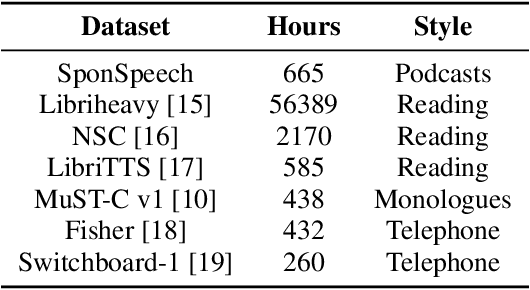

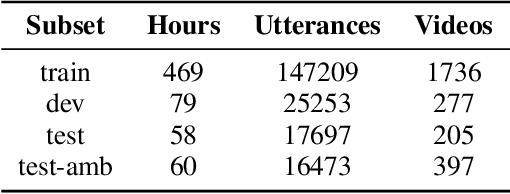
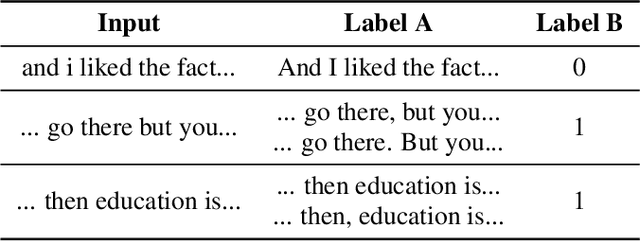
Abstract:Presently, punctuation restoration models are evaluated almost solely on well-structured, scripted corpora. On the other hand, real-world ASR systems and post-processing pipelines typically apply towards spontaneous speech with significant irregularities, stutters, and deviations from perfect grammar. To address this discrepancy, we introduce SponSpeech, a punctuation restoration dataset derived from informal speech sources, which includes punctuation and casing information. In addition to publicly releasing the dataset, we contribute a filtering pipeline that can be used to generate more data. Our filtering pipeline examines the quality of both speech audio and transcription text. We also carefully construct a ``challenging" test set, aimed at evaluating models' ability to leverage audio information to predict otherwise grammatically ambiguous punctuation. SponSpeech is available at https://github.com/GitHubAccountAnonymous/PR, along with all code for dataset building and model runs.
* 8 pages, 7 tables, 1 figure, Recognition Technologies, Inc. Technical Report
Carnatic Raga Identification System using Rigorous Time-Delay Neural Network
May 25, 2024Abstract:Large scale machine learning-based Raga identification continues to be a nontrivial issue in the computational aspects behind Carnatic music. Each raga consists of many unique and intrinsic melodic patterns that can be used to easily identify them from others. These ragas can also then be used to cluster songs within the same raga, as well as identify songs in other closely related ragas. In this case, the input sound is analyzed using a combination of steps including using a Discrete Fourier transformation and using Triangular Filtering to create custom bins of possible notes, extracting features from the presence of particular notes or lack thereof. Using a combination of Neural Networks including 1D Convolutional Neural Networks conventionally known as Time-Delay Neural Networks) and Long Short-Term Memory (LSTM), which are a form of Recurrent Neural Networks, the backbone of the classification strategy to build the model can be created. In addition, to help with variations in shruti, a long-time attention-based mechanism will be implemented to determine the relative changes in frequency rather than the absolute differences. This will provide a much more meaningful data point when training audio clips in different shrutis. To evaluate the accuracy of the classifier, a dataset of 676 recordings is used. The songs are distributed across the list of ragas. The goal of this program is to be able to effectively and efficiently label a much wider range of audio clips in more shrutis, ragas, and with more background noise.
* 7 pages, 2 tables, 3 figures
Robust Open-Set Spoken Language Identification and the CU MultiLang Dataset
Aug 29, 2023Abstract:Most state-of-the-art spoken language identification models are closed-set; in other words, they can only output a language label from the set of classes they were trained on. Open-set spoken language identification systems, however, gain the ability to detect when an input exhibits none of the original languages. In this paper, we implement a novel approach to open-set spoken language identification that uses MFCC and pitch features, a TDNN model to extract meaningful feature embeddings, confidence thresholding on softmax outputs, and LDA and pLDA for learning to classify new unknown languages. We present a spoken language identification system that achieves 91.76% accuracy on trained languages and has the capability to adapt to unknown languages on the fly. To that end, we also built the CU MultiLang Dataset, a large and diverse multilingual speech corpus which was used to train and evaluate our system.
* 6pages, 1 table, 6 figures
Efficient Ensemble Architecture for Multimodal Acoustic and Textual Embeddings in Punctuation Restoration using Time-Delay Neural Networks
Feb 26, 2023
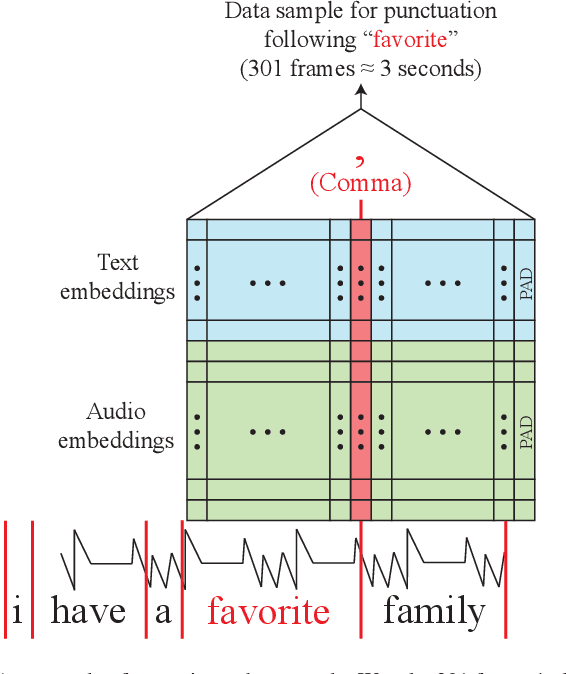


Abstract:Punctuation restoration plays an essential role in the post-processing procedure of automatic speech recognition, but model efficiency is a key requirement for this task. To that end, we present EfficientPunct, an ensemble method with a multimodal time-delay neural network that outperforms the current best model by 1.0 F1 points, using less than a tenth of its parameters to process embeddings. We streamline a speech recognizer to efficiently output hidden layer latent vectors as audio embeddings for punctuation restoration, as well as BERT to extract meaningful text embeddings. By using forced alignment and temporal convolutions, we eliminate the need for multi-head attention-based fusion, greatly increasing computational efficiency but also raising performance. EfficientPunct sets a new state of the art, in terms of both performance and efficiency, with an ensemble that weights BERT's purely language-based predictions slightly more than the multimodal network's predictions.
A Transaction Represented with Weighted Finite-State Transducers
Feb 01, 2023Abstract:Not all contracts are good, but all good contracts can be expressed as a finite-state transition system ("State-Transition Contracts"). Contracts that can be represented as State-Transition Contracts discretize fat-tailed risk to foreseeable, managed risk, define the boundary of relevant events governed by the relationship, and eliminate the potential of inconsistent contractual provisions. Additionally, State-Transition Contracts reap the substantial benefit of being able to be analyzed under the rules governing the science of the theory of computation. Simple State-Transition Contracts can be represented as discrete finite automata; more complicated State-Transition Contracts, such as those that have downstream effects on other agreements or complicated pathways of performance, benefit from representation as weighted finite-state transducers, with weights assigned as costs, penalties, or probabilities of transitions. This research paper (the "Research" or "Paper") presents a complex legal transaction represented as weighted finite-state transducers. Furthermore, we show that the mathematics/algorithms permitted by the algebraic structure of weighted finite-state transducers provides actionable, legal insight into the transaction.
Modernizing Open-Set Speech Language Identification
May 20, 2022



Abstract:While most modern speech Language Identification methods are closed-set, we want to see if they can be modified and adapted for the open-set problem. When switching to the open-set problem, the solution gains the ability to reject an audio input when it fails to match any of our known language options. We tackle the open-set task by adapting two modern-day state-of-the-art approaches to closed-set language identification: the first using a CRNN with attention and the second using a TDNN. In addition to enhancing our input feature embeddings using MFCCs, log spectral features, and pitch, we will be attempting two approaches to out-of-set language detection: one using thresholds, and the other essentially performing a verification task. We will compare both the performance of the TDNN and the CRNN, as well as our detection approaches.
Bi-LSTM Scoring Based Similarity Measurement with Agglomerative Hierarchical Clustering (AHC) for Speaker Diarization
May 19, 2022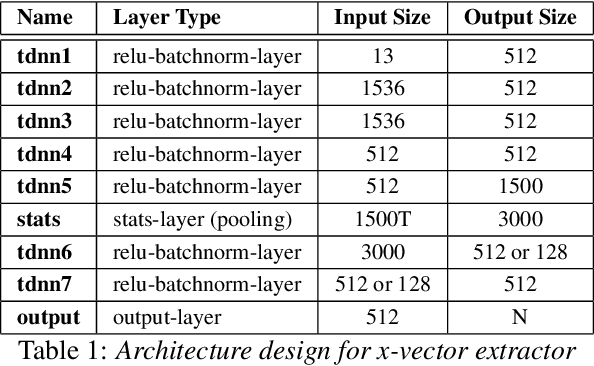



Abstract:Majority of speech signals across different scenarios are never available with well-defined audio segments containing only a single speaker. A typical conversation between two speakers consists of segments where their voices overlap, interrupt each other or halt their speech in between multiple sentences. Recent advancements in diarization technology leverage neural network-based approaches to improvise multiple subsystems of speaker diarization system comprising of extracting segment-wise embedding features and detecting changes in the speaker during conversation. However, to identify speaker through clustering, models depend on methodologies like PLDA to generate similarity measure between two extracted segments from a given conversational audio. Since these algorithms ignore the temporal structure of conversations, they tend to achieve a higher Diarization Error Rate (DER), thus leading to misdetections both in terms of speaker and change identification. Therefore, to compare similarity of two speech segments both independently and sequentially, we propose a Bi-directional Long Short-term Memory network for estimating the elements present in the similarity matrix. Once the similarity matrix is generated, Agglomerative Hierarchical Clustering (AHC) is applied to further identify speaker segments based on thresholding. To evaluate the performance, Diarization Error Rate (DER%) metric is used. The proposed model achieves a low DER of 34.80% on a test set of audio samples derived from ICSI Meeting Corpus as compared to traditional PLDA based similarity measurement mechanism which achieved a DER of 39.90%.
Automatic Spoken Language Identification using a Time-Delay Neural Network
May 19, 2022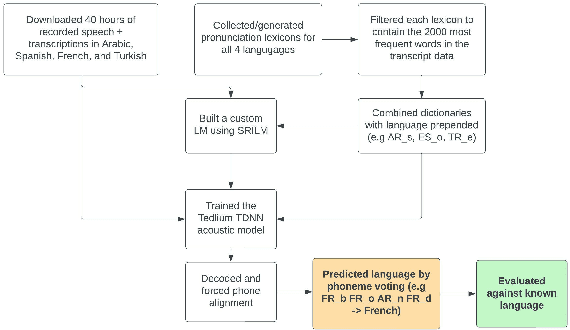
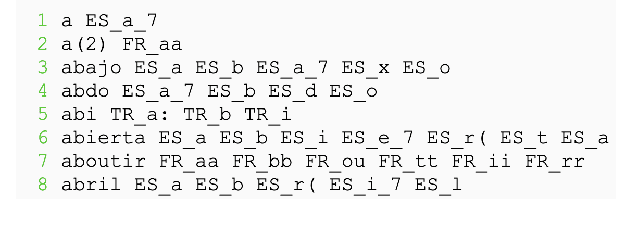
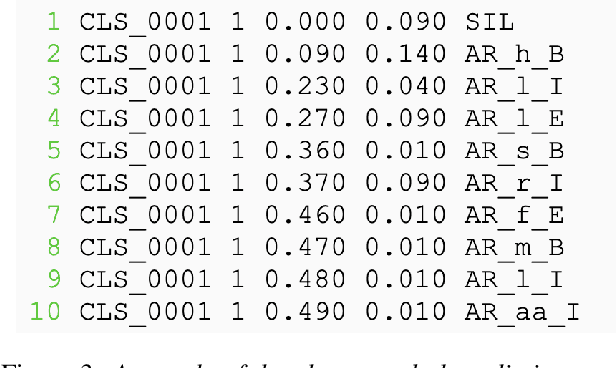
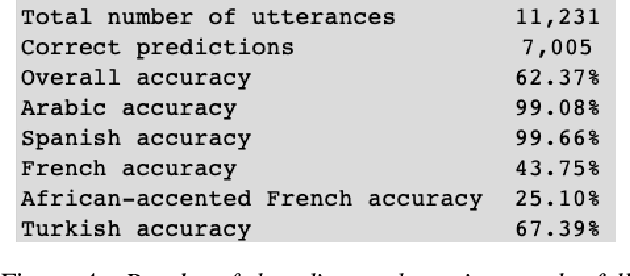
Abstract:Closed-set spoken language identification is the task of recognizing the language being spoken in a recorded audio clip from a set of known languages. In this study, a language identification system was built and trained to distinguish between Arabic, Spanish, French, and Turkish based on nothing more than recorded speech. A pre-existing multilingual dataset was used to train a series of acoustic models based on the Tedlium TDNN model to perform automatic speech recognition. The system was provided with a custom multilingual language model and a specialized pronunciation lexicon with language names prepended to phones. The trained model was used to generate phone alignments to test data from all four languages, and languages were predicted based on a voting scheme choosing the most common language prepend in an utterance. Accuracy was measured by comparing predicted languages to known languages, and was determined to be very high in identifying Spanish and Arabic, and somewhat lower in identifying Turkish and French.
Multi-Modal Emotion Detection with Transfer Learning
Nov 13, 2020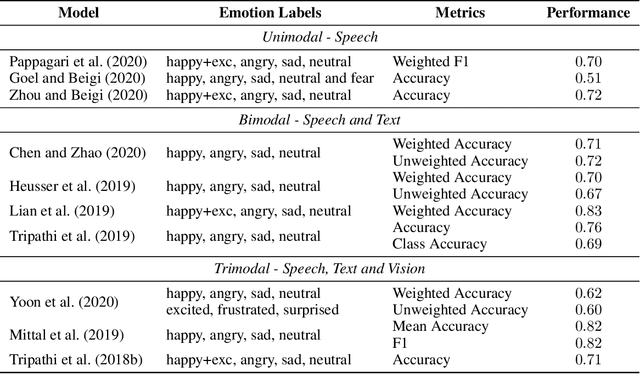
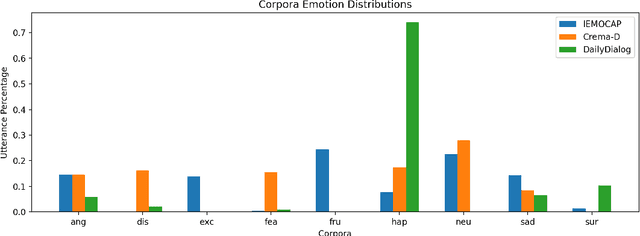

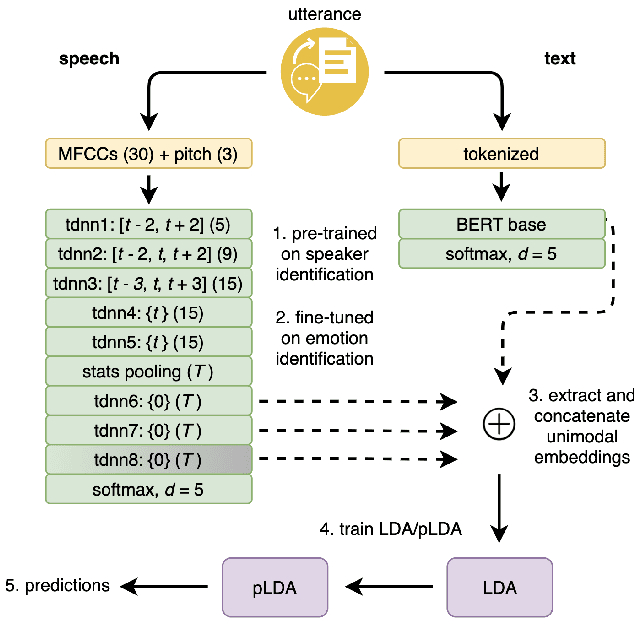
Abstract:Automated emotion detection in speech is a challenging task due to the complex interdependence between words and the manner in which they are spoken. It is made more difficult by the available datasets; their small size and incompatible labeling idiosyncrasies make it hard to build generalizable emotion detection systems. To address these two challenges, we present a multi-modal approach that first transfers learning from related tasks in speech and text to produce robust neural embeddings and then uses these embeddings to train a pLDA classifier that is able to adapt to previously unseen emotions and domains. We begin by training a multilayer TDNN on the task of speaker identification with the VoxCeleb corpora and then fine-tune it on the task of emotion identification with the Crema-D corpus. Using this network, we extract speech embeddings for Crema-D from each of its layers, generate and concatenate text embeddings for the accompanying transcripts using a fine-tuned BERT model and then train an LDA - pLDA classifier on the resulting dense representations. We exhaustively evaluate the predictive power of every component: the TDNN alone, speech embeddings from each of its layers alone, text embeddings alone and every combination thereof. Our best variant, trained on only VoxCeleb and Crema-D and evaluated on IEMOCAP, achieves an EER of 38.05%. Including a portion of IEMOCAP during training produces a 5-fold averaged EER of 25.72% (For comparison, 44.71% of the gold-label annotations include at least one annotator who disagrees).
A Transfer Learning Method for Speech Emotion Recognition from Automatic Speech Recognition
Aug 15, 2020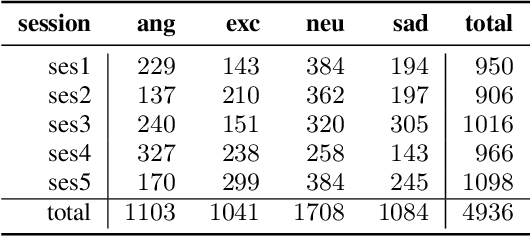


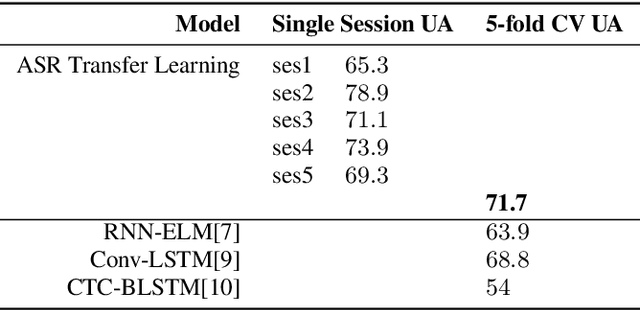
Abstract:This paper presents a transfer learning method in speech emotion recognition based on a Time-Delay Neural Network (TDNN) architecture. A major challenge in the current speech-based emotion detection research is data scarcity. The proposed method resolves this problem by applying transfer learning techniques in order to leverage data from the automatic speech recognition (ASR) task for which ample data is available. Our experiments also show the advantage of speaker-class adaptation modeling techniques by adopting identity-vector (i-vector) based features in addition to standard Mel-Frequency Cepstral Coefficient (MFCC) features.[1] We show the transfer learning models significantly outperform the other methods without pretraining on ASR. The experiments performed on the publicly available IEMOCAP dataset which provides 12 hours of motional speech data. The transfer learning was initialized by using the Ted-Lium v.2 speech dataset providing 207 hours of audio with the corresponding transcripts. We achieve the highest significantly higher accuracy when compared to state-of-the-art, using five-fold cross validation. Using only speech, we obtain an accuracy 71.7% for anger, excitement, sadness, and neutrality emotion content.
 Add to Chrome
Add to Chrome Add to Firefox
Add to Firefox Add to Edge
Add to Edge